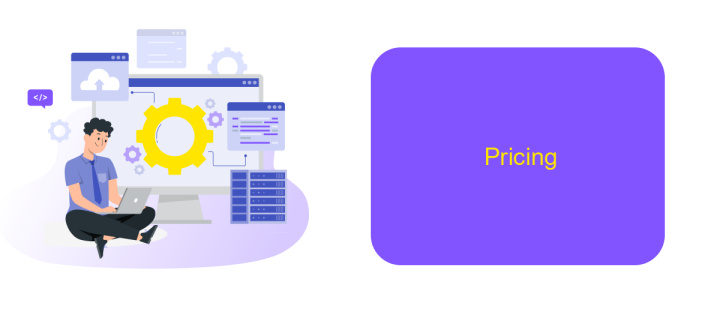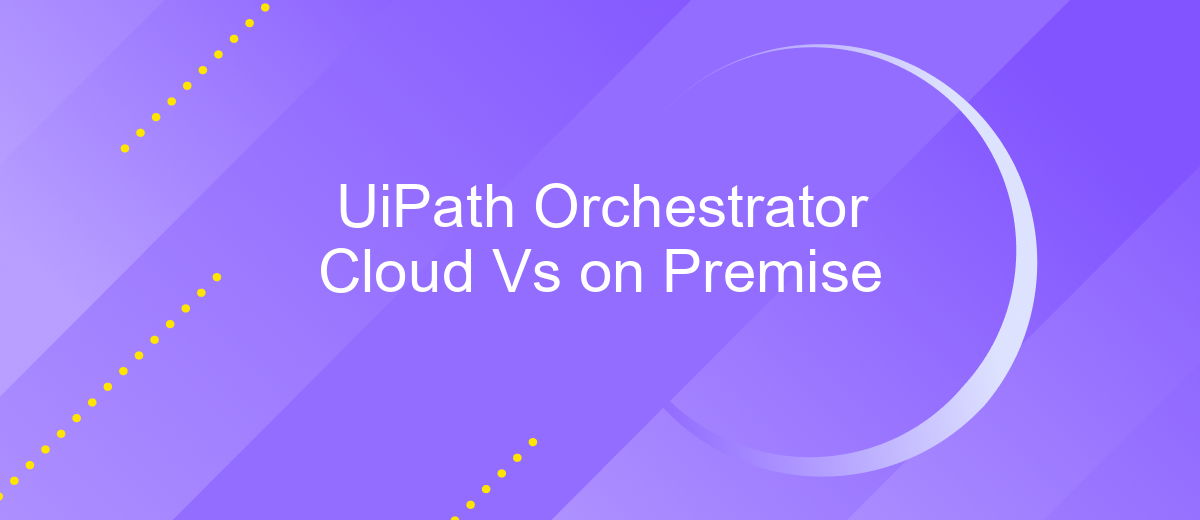UiPath Orchestrator Cloud Vs on Premise
When choosing between UiPath Orchestrator Cloud and On-Premise, organizations must weigh various factors such as cost, scalability, security, and maintenance. Each deployment option offers unique advantages tailored to different business needs. This article explores the key differences, benefits, and potential drawbacks of both cloud-based and on-premise solutions to help you make an informed decision.
UiPath Orchestrator Cloud
UiPath Orchestrator Cloud offers a robust platform for managing, deploying, and monitoring RPA (Robotic Process Automation) processes in a cloud environment. This cloud-based solution eliminates the need for on-premise infrastructure, providing scalability and flexibility for organizations of all sizes.
- Automatic updates and maintenance
- Scalable resources to match business needs
- Enhanced security and compliance
- Global accessibility and collaboration
- Integration capabilities with services like ApiX-Drive
With UiPath Orchestrator Cloud, businesses can seamlessly integrate various applications and services using tools like ApiX-Drive, which simplifies the process of connecting different systems. This allows for smoother workflows and better data management, ensuring that automation processes run efficiently and effectively. Overall, UiPath Orchestrator Cloud provides a comprehensive solution for modern RPA needs.
UiPath Orchestrator on-Premise

UiPath Orchestrator on-premise offers organizations complete control over their automation infrastructure by hosting the platform on their own servers. This deployment model ensures that sensitive data remains within the company's internal network, providing an additional layer of security and compliance. Companies can customize their Orchestrator environment to meet specific IT policies and operational requirements, which can be particularly beneficial for industries with stringent regulatory standards.
With on-premise solutions, integration with other enterprise systems and applications can be more seamless and tailored. Tools like ApiX-Drive facilitate these integrations by allowing users to connect UiPath Orchestrator with various third-party services and applications without extensive coding. This enables streamlined workflows and enhances the overall efficiency of robotic process automation (RPA) initiatives. Additionally, on-premise deployments can offer better performance and reliability, as they are not dependent on internet connectivity and external cloud service providers.
Key Differences

When comparing UiPath Orchestrator Cloud and On-Premise, several key differences emerge that influence an organization's choice between the two.
- Deployment and Maintenance: The Cloud version offers a hassle-free deployment with automatic updates and maintenance managed by UiPath, whereas the On-Premise version requires manual installation, updates, and dedicated IT resources for maintenance.
- Scalability: UiPath Orchestrator Cloud provides effortless scalability, allowing organizations to easily adjust resources based on demand. In contrast, On-Premise solutions require additional hardware and infrastructure investments to scale.
- Cost: The Cloud option typically involves a subscription-based pricing model, reducing upfront costs. On-Premise solutions often require significant initial investments in hardware and software licenses.
- Integration Capabilities: Both versions support robust integration capabilities; however, the Cloud version can leverage services like ApiX-Drive to streamline and automate integrations with other cloud-based applications, enhancing overall efficiency.
- Security and Compliance: On-Premise solutions offer more control over data security and compliance, which is crucial for organizations with stringent regulatory requirements. The Cloud version, while secure, relies on UiPath's security protocols and compliance certifications.
Ultimately, the choice between UiPath Orchestrator Cloud and On-Premise depends on an organization's specific needs, including their IT infrastructure, budget, and regulatory requirements.
Pricing

When considering UiPath Orchestrator, pricing is a crucial factor that can influence your decision between the Cloud and On-Premise versions. The Cloud version offers a subscription-based pricing model, which includes regular updates, maintenance, and support, making it an attractive option for businesses looking to minimize upfront costs.
On the other hand, the On-Premise version typically involves a significant initial investment, as you need to purchase the software license and possibly additional hardware. However, it may be more cost-effective in the long run for organizations with specific security or compliance requirements that necessitate on-premise deployment.
- Cloud: Subscription-based pricing, includes updates and support.
- On-Premise: One-time purchase cost, potential additional hardware expenses.
- Cloud: Lower upfront costs, scalable based on usage.
- On-Premise: Higher initial investment, may offer long-term savings.
Additionally, for those looking to integrate UiPath Orchestrator with other systems, services like ApiX-Drive can simplify the process, offering seamless integration capabilities without the need for extensive technical knowledge. This can further enhance the value proposition of both Cloud and On-Premise versions, depending on your specific business needs.
Conclusion
Choosing between UiPath Orchestrator Cloud and On-Premise solutions depends on various factors, including cost, scalability, and control. The cloud option offers the advantage of reduced infrastructure costs, automatic updates, and effortless scalability, making it an ideal choice for businesses looking to minimize maintenance overhead. On the other hand, the on-premise solution provides greater control over data security, compliance, and customization, which may be crucial for organizations with stringent regulatory requirements.
When integrating UiPath Orchestrator with other systems, services like ApiX-Drive can streamline the process, offering seamless connectivity and automation. ApiX-Drive enables easy integration with various applications, ensuring that data flows smoothly across platforms, whether you opt for the cloud or on-premise setup. Ultimately, the decision should align with your organization's specific needs, taking into account factors such as budget, security, and future growth plans.
FAQ
What is the main difference between UiPath Orchestrator Cloud and On-Premise?
How does the cost compare between Cloud and On-Premise Orchestrator?
Can I migrate from On-Premise Orchestrator to Cloud Orchestrator?
What are the security implications of using Cloud Orchestrator versus On-Premise?
How do updates and maintenance differ between Cloud and On-Premise Orchestrator?
Apix-Drive will help optimize business processes, save you from a lot of routine tasks and unnecessary costs for automation, attracting additional specialists. Try setting up a free test connection with ApiX-Drive and see for yourself. Now you have to think about where to invest the freed time and money!

